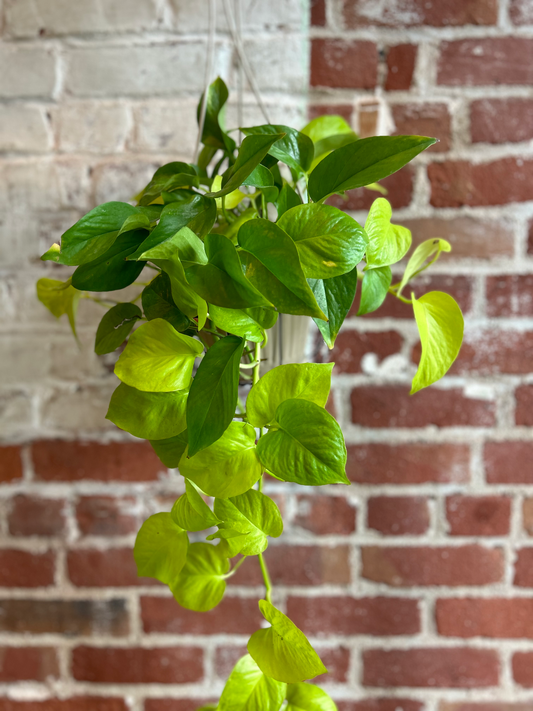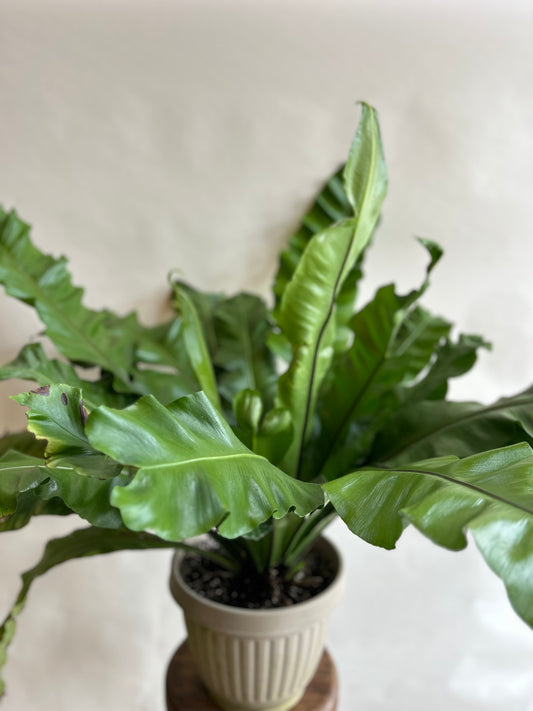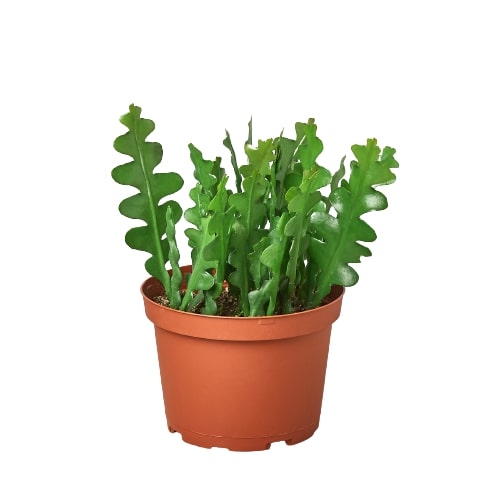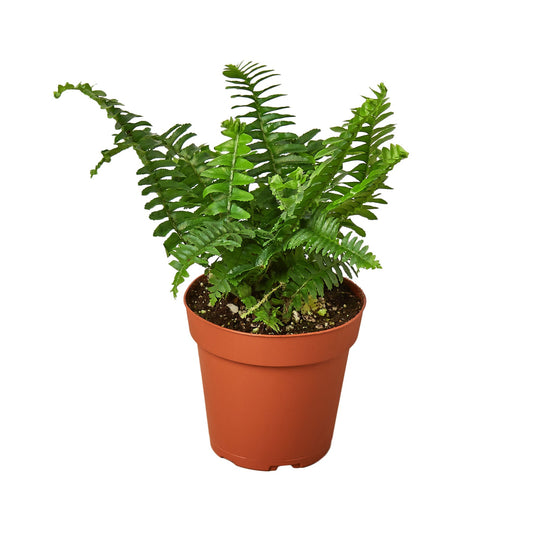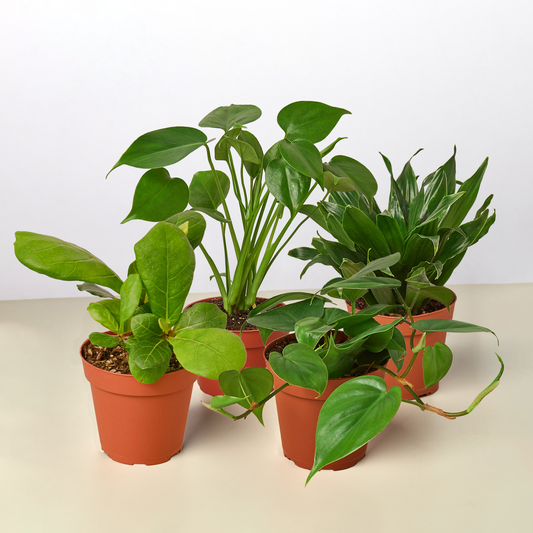Do Hoya Bellas Bloom? A Guide to Hoya Bella Flowers
Cafe Planta Team
Hoya Bella, often called the "Beautiful Hoya," is a charming plant that many plant lovers adore. Its delicate foliage and star-shaped flowers make it a popular choice for both beginners and experienced plant parents. But do Hoya Bellas bloom? That's a question that sparks curiosity among many. Let's explore the ins and outs of Hoya Bella flowers, from what makes them special to how you can encourage your own plant to bloom.
In this article, we'll look at the intriguing world of Hoya Bella flowers. We'll cover everything from their unique characteristics to tips on encouraging blooming and maintaining healthy plants. Whether you're a seasoned plant parent or just starting your journey with houseplants, there's something here for everyone.
What Makes Hoya Bella Special?
Hoya Bella stands out in the world of indoor plants for its beautiful appearance and relatively low maintenance needs. Native to Southeast Asia, this plant has adapted well to indoor environments, making it a favorite among plant lovers. Its vining nature allows it to gracefully drape over the edges of pots, adding a lovely touch to any space.
The leaves of the Hoya Bella are small and oval-shaped, with a glossy finish that catches the light beautifully. This plant's real showstopper, however, is its flowers. When in bloom, Hoya Bella produces clusters of star-shaped flowers that are not only visually stunning but also fragrant. The flowers usually have a white base with a pink or red center, adding a splash of color to your plant collection.
One of the reasons Hoya Bella is cherished is because of its relatively easy-going nature. It doesn't demand constant attention, making it suitable for those who may not have the most consistent plant care routine. That being said, giving it the right conditions can significantly increase the chances of seeing those delightful blooms.
Understanding the Blooming Cycle
Like many plants, Hoya Bella has a specific blooming cycle. Understanding this cycle can help you tailor your care to encourage more frequent and vibrant blooms. Hoya Bella generally blooms during the warmer months, typically from late spring to early fall. This timing aligns with its natural habitat's growing season, where conditions are optimal for flowering.
The blooming cycle is influenced by several factors, including light, temperature, and humidity. Hoya Bella requires bright, indirect light to thrive and bloom. Direct sunlight can scorch its leaves, so finding a balance is crucial. A spot near a window that receives filtered light is often ideal.
Temperature also plays a role in the blooming process. Hoya Bella prefers warmer temperatures, ideally between 60-80°F (15-27°C). Sudden drops in temperature can stress the plant and hinder blooming. Maintaining a stable environment is key to supporting its growth and flowering.
Humidity is another factor that can affect blooming. Hoya Bella thrives in environments with moderate to high humidity levels. If you live in a particularly dry area, consider using a humidifier or placing a tray of water near the plant to increase humidity. This can help mimic its natural habitat and encourage those lovely blooms.
Light Requirements for Blooming
Light is one of the most critical factors in encouraging Hoya Bella to bloom. This plant loves bright, indirect light, which mimics the dappled sunlight it would receive in its natural environment. Placing your Hoya Bella near a north or east-facing window can provide the ideal conditions for growth and flowering.
While Hoya Bella can tolerate lower light conditions, this generally results in less frequent blooming. If you're eager to see those beautiful flowers, ensuring your plant gets enough light is essential. However, be cautious with direct sunlight, especially through a south or west-facing window, as it can cause leaf burn.
If natural light is limited in your home, consider using artificial lighting. LED grow lights can supplement natural light and provide the necessary spectrum for your Hoya Bella to thrive. Position the lights about 12-18 inches above the plant and keep them on for about 12-14 hours a day to simulate natural daylight.
Remember, finding the right balance is crucial. Too much light can harm the plant, while too little can prevent blooming. Regularly observe your plant's response to its lighting conditions and adjust as needed to ensure it's happy and healthy.
Watering Your Hoya Bella
Watering is another essential aspect of caring for Hoya Bella, especially when it comes to promoting blooms. Like many houseplants, Hoya Bella prefers a moderate watering routine. Overwatering can lead to root rot, while underwatering can cause stress and hinder flowering.
A good rule of thumb is to let the top inch of soil dry out before watering again. During the growing season, Hoya Bella may require more frequent watering, but it's always best to check the soil moisture before adding more water. In the dormant winter months, reduce watering as the plant's growth slows down.
Using room temperature water is recommended to avoid shocking the plant. Additionally, ensure your pot has proper drainage to prevent water from sitting at the bottom, which can lead to root issues.
Consistency is key when it comes to watering. Try to maintain a regular schedule and avoid sudden changes in the watering routine. This stability will help your Hoya Bella remain healthy and encourage it to produce those lovely flowers.
Temperature and Humidity Considerations
As mentioned earlier, temperature and humidity are vital for Hoya Bella's growth and blooming. Keeping your plant in a stable environment that mimics its natural habitat can significantly enhance its chances of flowering.
Hoya Bella thrives in temperatures between 60-80°F (15-27°C). It's essential to avoid placing the plant near drafts, heating vents, or air conditioning units, as sudden temperature fluctuations can stress the plant and impede blooming.
Humidity is equally important. Hoya Bella prefers moderate to high humidity levels. If your home is on the drier side, especially during the winter months, consider ways to increase humidity. Grouping plants can create a microclimate, raising humidity levels naturally. You can also use a humidifier or mist the plant occasionally to maintain adequate moisture in the air.
Regularly check your plant for signs of stress, such as wilting or browning leaves, which might indicate issues with temperature or humidity. Adjusting these conditions can go a long way in promoting healthy growth and vibrant blooms.
Feeding Your Hoya Bella
Fertilizing, or feeding, your Hoya Bella is an essential part of encouraging blooms. During the growing season (spring and summer), providing your plant with the necessary nutrients can support its flowering process.
A balanced, water-soluble fertilizer is ideal for Hoya Bella. Look for one with equal parts nitrogen, phosphorus, and potassium (often labeled as NPK on fertilizer packaging). Fertilize your plant every four to six weeks during the growing season. Be sure to dilute the fertilizer to half-strength to avoid overfeeding, which can harm the plant.
In the dormant winter months, reduce or completely stop fertilizing, as the plant's growth naturally slows down. Over-fertilizing during this period can lead to salt buildup in the soil, which can be detrimental to the plant's health.
Keep an eye on your plant for signs of nutrient deficiency, such as yellowing leaves or stunted growth. Adjust your feeding routine as needed to ensure your Hoya Bella is getting the right balance of nutrients.
Pruning and Training for Optimal Blooms
Pruning and training your Hoya Bella can also contribute to its blooming success. Regularly pruning your plant helps maintain its shape, encourages new growth, and can lead to more abundant flowering.
When pruning, focus on removing any dead or damaged leaves and stems. This not only improves the plant's appearance but also redirects energy to healthy growth and flowering. Be sure to use clean, sharp scissors or pruning shears to make precise cuts and avoid damaging the plant.
Training your Hoya Bella involves guiding its growth to create a more aesthetically pleasing shape. You can use trellises, stakes, or wires to support the plant's vining nature. This can also lead to more even light distribution, promoting healthier growth and more blooms.
Remember, pruning and training should be done during the growing season when the plant is actively producing new growth. Avoid excessive pruning during the dormant months, as this can stress the plant.
Potential Challenges and How to Overcome Them
Like any plant, Hoya Bella can face challenges that may hinder its blooming potential. Common issues include pests, diseases, and environmental stressors. Knowing how to identify and address these problems can help you maintain a healthy, thriving plant.
Pests such as aphids, mealybugs, and spider mites can affect Hoya Bella. Regularly inspect your plant for signs of infestations, such as discolored leaves or sticky residue. If you notice pests, treat the plant with insecticidal soap or neem oil to prevent further damage.
Disease can also be a concern, particularly fungal issues like root rot or leaf spot. Ensuring proper watering and drainage can help prevent these problems. If you notice signs of disease, such as wilting or black spots, remove the affected areas and adjust your care routine to prevent recurrence.
Environmental stressors, such as low light, inconsistent watering, or temperature fluctuations, can also impact your plant's health and ability to bloom. Regularly assess your plant's growing conditions and make adjustments as needed to provide a stable, supportive environment.
Final Thoughts
To sum up, Hoya Bella is a delightful plant with the potential to produce stunning blooms when given the right care. By understanding its needs for light, water, temperature, and feeding, you can create an environment that encourages healthy growth and vibrant flowers.
At Cafe Planta, we believe that caring for plants is a journey that brings joy and connection. If you have any questions about your plants or need advice, feel free to email us or reach out on Instagram. We're here to help you cultivate a beautiful and thriving plant collection in your home. Happy planting!


